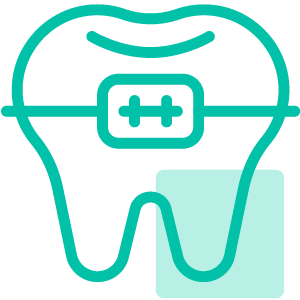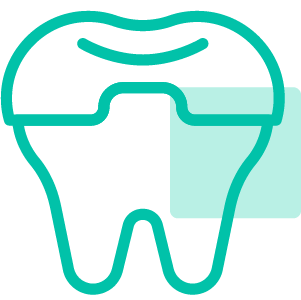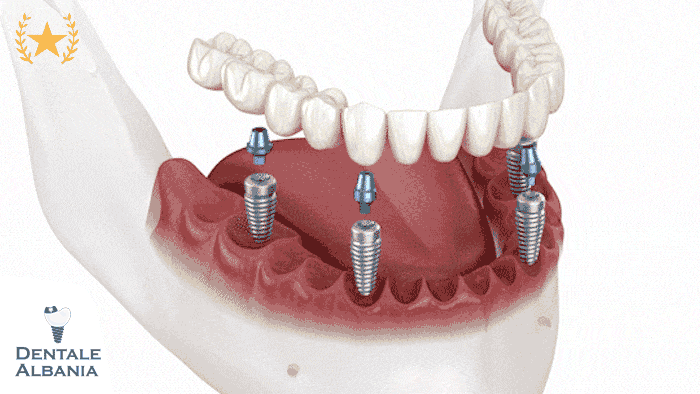Table of Contents
ToggleWho Needs Zygomatic Implants and When Are They Recommended?

Zygomatic implants are not intended for everyone. They are a specialized solution for individuals with severe upper jaw bone loss, especially when traditional dental implants are not feasible. These patients may have been told they are “not a candidate” for regular implants due to insufficient bone volume or failed previous treatments. So, who needs zygomatic implants, and when should they be considered?
Common Patient Profiles
- Denture Wearers: Long-term denture use leads to progressive bone resorption in the maxilla, making traditional implants increasingly difficult to place. Zygomatic implants offer a graft-free alternative for a stable, fixed prosthesis.
- Patients with Failed Bone Grafts or Implants: Individuals who have undergone sinus augmentation, bone grafting, or even prior failed implant treatments often turn to zygomatic implants as a last resort — and find long-term success.
- Post-Trauma or Post-Tumor Resection: When the upper jaw has suffered trauma or surgical resection (e.g., due to tumors), the remaining bone may be insufficient for standard implants. Zygomatic implants utilize the untouched cheekbone to restore function and appearance.
- Patients Refused Traditional Implants Elsewhere: Many patients come to zygomatic implant specialists after being rejected for implants by general dentists due to severe maxillary atrophy.
Can You Get Zygomatic Implants on the NHS?
- Private vs NHS Availability: While standard dental implants are generally not covered by the NHS, zygomatic implants are even less likely to be offered. Due to their complexity and cost, they are considered specialist-level treatments and are mostly available through private clinics.
- Possible Exceptions: In rare cases (e.g., cancer reconstruction or trauma), treatment in hospital-based maxillofacial units might include zygomatic implants under NHS care — but this is not common for general edentulous cases.
What Is the Alternative to Zygomatic Implants?
- Sinus Lift + Bone Graft + Standard Implants: This approach involves rebuilding the bone over several months, followed by traditional implants — but increases treatment time, cost, and risk of failure.
- Pterygoid Implants: These implants are placed at the junction of the maxilla and pterygoid plate and offer another graft-free solution in difficult cases. They are often used in conjunction with zygomatic implants for added support.
- Removable Dentures: A non-surgical option, dentures offer minimal invasiveness but sacrifice stability, chewing efficiency, and comfort.
What Are the Benefits of Zygomatic Implants Compared to Traditional Implants?
Zygomatic implants offer several unique advantages for patients who are not suitable for traditional implants due to severe upper jaw bone loss. These benefits go far beyond just replacing missing teeth — they significantly improve quality of life, aesthetics, and treatment efficiency.
Are Zygomatic Implants Worth It?
- Long-Term Investment: Though more expensive upfront, zygomatic implants can last decades, avoiding the need for repeated grafts, denture replacements, or ongoing discomfort.
- Improved Quality of Life: Patients report restored confidence, better chewing ability, clearer speech, and no longer feeling embarrassed in social settings.
- Life-Changing Results: Testimonials often describe the transformation as “dental facelifts,” highlighting the aesthetic and psychological uplift zygomatic implants bring.
What Are the Advantages of Zygomatic Implants?
- Immediate Loading: One of the biggest benefits is the ability to fit a fixed bridge on the same day of surgery. This “teeth in a day” concept eliminates months of waiting.
- No Need for Bone Grafts: Traditional implants often require complex procedures like sinus lifts and grafting. Zygomatic implants skip these steps entirely by anchoring into the zygomatic bone.
- High Stability and Durability: The cheekbone (zygomatic arch) offers denser, more reliable bone anchorage, supporting long-term success even in cases of extreme bone resorption.
- Restored Facial Structure: Severe bone loss can lead to a “sunken” look. By anchoring implants in the zygoma, facial structure is supported and aesthetics improved, often making patients look years younger.
- Fewer Surgeries: Because they eliminate the need for sinus lifts and bone grafts, treatment time is reduced, healing is faster, and fewer complications arise.
What Are the Disadvantages and Risks of Zygomatic Implants?
While zygomatic implants are a game-changing solution for many patients, they are not without certain disadvantages and risks. Understanding these factors is essential before proceeding with treatment.
- Surgical Complexity: Zygomatic implants are significantly more complex to place than regular implants. They require specialized training, experience, and advanced imaging (like CBCT scans) to avoid complications.
- Higher Costs: Due to their complexity, longer length, and the level of expertise required, zygomatic implant procedures are generally more expensive than traditional implants — often ranging from £10,000 to over £25,000.
- Longer Procedure Time: The surgery itself can take several hours and is usually performed under sedation or general anaesthesia. Recovery may also be longer due to the extent of the procedure.
- Potential Complications: Although rare, complications can occur, particularly if not placed by a highly experienced implantologist.
Can Zygomatic Implants Cause Headaches?
- Sinus or Nerve Involvement: Headaches can occasionally occur after surgery due to proximity to the sinus cavity or infraorbital nerve.
- Temporary Discomfort: Post-op headaches are typically temporary and manageable with standard pain relief medications.
- Importance of Expertise: Proper implant placement by a skilled specialist significantly reduces the risk of sinus complications or nerve pressure.
Can Zygomatic Implants Be Removed?
- Difficult to Remove: Due to their anchorage deep in the zygomatic bone, removal is far more complicated than with standard implants.
- Reasons for Removal: Removal may be necessary in rare cases such as infection, chronic sinus issues, or implant failure.
- Rehabilitation Options After Removal: If removal becomes necessary, advanced surgical planning is required for alternative rehabilitation, such as customized bone grafting or a switch to pterygoid implants.
How Are Zygomatic Implants Placed During Surgery?

Zygomatic implant placement is a highly specialized surgical procedure that differs significantly from conventional implant placement. It demands advanced training, surgical precision, and meticulous planning to ensure both safety and success.
- Initial Diagnostics and Planning: The process begins with detailed diagnostics, including a 3D CBCT (Cone Beam Computed Tomography) scan. This imaging assesses bone volume, sinus position, and zygomatic bone structure. Digital planning software is used to simulate ideal implant placement and avoid anatomical risks.
- Custom Treatment Planning: The oral surgeon will tailor the approach based on each patient’s bone anatomy, whether combining zygomatic with conventional implants or using a quad zygoma approach for completely resorbed maxillae.
- Pre-Surgical Preparation: Patients may be advised to fast before surgery and will be informed of what to expect post-operatively. In some cases, antibiotics or anti-inflammatory medication is prescribed in advance.
- Surgical Procedure Overview:
- Incisions are made in the upper gum area to expose the underlying bone.
- A lateral window may be opened to visualize the sinus cavity and position the implant without perforating the Schneiderian membrane.
- The implant is inserted at an angle through the sinus wall and anchored in the dense zygomatic bone.
- Typically, two zygomatic implants are placed in combination with 2–4 standard anterior implants. In more severe cases, four zygomatic implants may be used (quad zygoma).
- Use of Advanced Technology: Navigation systems or static surgical guides may be used for increased accuracy and safety.
- Duration and Anesthesia: The procedure may last 2 to 4 hours, depending on complexity, and is typically performed under IV sedation or general anesthesia to ensure patient comfort.
Do You Need a Sinus Lift for Zygomatic Implants?
- No Sinus Lift Required: One of the greatest advantages of zygomatic implants is that they bypass the need for a sinus lift altogether.
- Sinus Wall Involvement: While the implant may pass through or near the sinus cavity, it is anchored in the zygomatic bone, eliminating the need to build bone mass in the posterior maxilla.
- Safer Modern Techniques: Techniques such as the extra-sinus approach and the Zygoma Anatomy-Guided Approach (ZAGA) are designed to minimize sinus complications and avoid direct membrane contact.
How Long Does It Take to Heal From Zygomatic Implants?
Healing from zygomatic implants is generally smooth but varies depending on the individual’s health, complexity of the case, and post-operative care. Since zygomatic implants avoid bone grafts and sinus lifts, recovery time is often shorter compared to traditional methods.
- Initial Healing Phase:
- Swelling and bruising are most common in the first 3–5 days.
- Some patients experience tightness or numbness around the cheekbones.
- Over-the-counter pain relief and prescribed anti-inflammatories typically manage discomfort well.
- Soft Tissue Healing:
- Gums usually start healing within the first two weeks.
- Sutures may dissolve or be removed within 7–10 days depending on the technique used.
- Gentle brushing and warm saline rinses help prevent infection.
- Osseointegration Period:
- Full integration of the implant with the zygomatic bone (osseointegration) may take 3 to 6 months.
- During this time, a temporary bridge allows for normal function and aesthetics.
- Final prosthesis is typically placed after this phase to ensure long-term success.
- Follow-up Visits:
- Regular checkups are scheduled to monitor healing and implant stability.
- Dentists assess gum health, bite alignment, and clean the area if needed.
- Patients may receive custom guidance on cleaning their temporary bridge and maintaining oral hygiene.
How Painful Are Zygomatic Implants?
- Mild to Moderate Discomfort:
- Most patients report surprisingly low levels of pain post-surgery.
- IV sedation or general anesthesia ensures a painless procedure itself.
- Post-Op Management:
- Painkillers and ice packs are typically sufficient for the first few days.
- Discomfort usually subsides within a week.
- Comparison With Grafting:
- Patients often describe less post-op discomfort compared to bone grafting or sinus lift surgeries.
- Recovery is quicker due to the stability of the zygomatic bone.
How Long Do Zygomatic Implants Last and How Durable Are They?

Zygomatic implants are known for their long-term reliability and exceptional strength, making them a highly durable option for patients with severe upper jaw bone loss. When properly placed and maintained, they can last just as long — or even longer — than traditional implants.
- Average Lifespan:
- Most zygomatic implants last between 15 to 25+ years.
- Some patients have had their implants in place for over two decades without complications.
- Their longevity is closely linked to expert placement, oral hygiene, and lifestyle habits.
- Material Quality:
- Typically made from medical-grade titanium, which is biocompatible and resistant to corrosion.
- The implants are specially designed to fuse securely into the dense zygomatic (cheek) bone.
- Implant Structure and Load Distribution:
- Due to their angled placement and length, zygomatic implants distribute chewing forces evenly.
- This reduces stress on surrounding bone and contributes to their durability.
- Maintenance and Longevity Tips:
- Good oral hygiene and professional cleanings are essential.
- Avoiding smoking and managing conditions like diabetes can extend the life of the implant.
- Nightguards may be recommended for patients who grind their teeth.
What Is the Success Rate of Zygomatic Implants?
- Clinically Proven:
- Studies show 96%–98% survival rates over 10–12 years.
- These rates are comparable to or better than those of traditional implants in complex cases.
- High Success in Difficult Cases:
- Zygomatic implants often succeed in patients who were previously told implants were not an option.
- Success is especially high in “Teeth in a Day” or immediate loading protocols with experienced clinicians.
- Importance of Experience:
- Choosing a skilled oral surgeon or implantologist significantly increases the chances of success.
- Pre-surgical 3D planning and CBCT imaging are key to minimizing risk and maximizing outcomes.
What Is the Survival Rate for Zygomatic Implants?
- Long-Term Clinical Data:
- Data from peer-reviewed studies report long-term success rates holding steady around 96–97% over a 12–15 year period.
- Survival rate refers to the implant still functioning effectively and remaining stable in the bone.
- Indicators of Survival:
- Absence of mobility or infection
- Continued bone support without resorption
- Stable and functional prosthetic attachment
How Much Do Zygomatic Implants Cost in the UK?
Zygomatic implants are a specialized procedure, and their pricing reflects the complexity, materials, and expertise required. While they offer life-changing results for patients with severe upper jaw bone loss, it’s important to understand the investment involved.
- Average Price Range:
- The cost of zygomatic implants in the UK typically ranges from £10,000 to £25,000+.
- This price may vary depending on whether 2 or 4 zygomatic implants are used, and whether additional regular implants are placed.
- What’s Included in the Cost:
- Initial Consultation and 3D CBCT scan
- Surgical placement of implants under sedation or general anaesthesia
- Temporary teeth placed the same day (if using immediate loading protocol)
- Final prosthesis fitted 3–6 months after healing
- Follow-up appointments and aftercare
- Some clinics also include pain medication, antibiotics, and hygiene kits
- Factors That Influence Cost:
- The experience and location of the dental surgeon or clinic
- The technology used (e.g., CAD/CAM prosthesis design, 3D planning)
- The materials used for the final bridge (e.g., acrylic vs. zirconia)
- Is Financing Available?:
- Many dental clinics offer interest-free finance plans over 6–12 months
- Longer-term financing is also available (up to 5 years) with interest
- Some clinics may offer package deals for full arch restorations
How Much Are Zygomatic Implants in the UK?
- Cost Breakdown Examples:
- 2 zygomatic implants + 2–4 regular implants: £12,000–£16,000
- Full upper arch using quad zygomatic approach (4 implants): £18,000–£25,000+
- “Teeth in a Day” zygomatic package: Starts at around £15,000
- Price Comparison by Location:
- London: Premium pricing due to demand and top-tier specialists
- Manchester, Birmingham, and other cities: Slightly more affordable, but still within a similar range
- Overseas options: Countries like Turkey may offer zygomatic implants at lower costs, but consider travel, quality, and aftercare
How Much Do Zygomatic Implants Cost in Albania?
Albania has emerged as a popular destination for dental tourism, offering world-class treatments at significantly lower prices compared to Western Europe. Zygomatic implants — a complex and highly specialized solution for patients with severe upper jaw bone loss — are no exception. Patients from the UK, Italy, Germany, and beyond are increasingly choosing Albania for this advanced procedure due to its affordability and high standards of care.
-
Average Cost in Albania
The cost of zygomatic implants in Albania typically ranges from €5,000 to €10,000, depending on the complexity of the case, the number of implants required, and the clinic’s reputation. This is often 50–70% less expensive than in the UK, where the same procedure may cost upwards of £20,000. -
What’s Included in the Price?
Albanian dental clinics often provide all-inclusive treatment packages that cover:-
Initial consultation and CBCT 3D scan
-
Surgical placement of 2 or 4 zygomatic implants
-
Additional regular implants if required
-
Temporary fixed bridge (Teeth in a Day)
-
Final prosthetic bridge after healing
-
Medication and sedation
-
Post-operative care and check-ups
Some clinics even offer airport transfers, hotel accommodation, and personal interpreters as part of their dental tourism services.
-
-
Cost Breakdown Example
-
2 zygomatic + 2 regular implants with bridge: €5,000 – €7,000
-
Quad zygoma (4 zygomatic implants) with full-arch restoration: €8,000 – €10,000
-
Teeth in a Day package with hybrid bridge: €6,000 – €9,500
-
-
Why Is It Cheaper in Albania?
Lower labor and operational costs in Albania allow clinics to offer competitive pricing without compromising on quality. Many clinics use the same implant brands (like Nobel Biocare or Straumann) as those used in UK or EU clinics and follow international sterilization and surgical standards. -
Quality and Expertise
Reputable Albanian clinics are equipped with state-of-the-art technology, including digital scanners and in-house dental labs. Implantologists performing zygomatic procedures often have international training and experience, particularly in handling complex full-mouth restorations. -
Is It Worth Traveling to Albania for Zygomatic Implants?
For patients who have been told they are not candidates for regular implants and are facing high costs in their home countries, Albania offers an affordable, reliable, and timely alternative. The added benefit of combining the treatment with a relaxing Mediterranean holiday makes it even more attractive.
Frequently Asked Questions About Zygomatic Implants

How Long Do Zygomatic Implants Last?
Zygomatic implants are known for their exceptional longevity, often lasting decades with proper care. Their durability makes them an ideal solution for patients with severe maxillary bone loss who are looking for a long-term, stable tooth replacement.
- Typical Lifespan: Zygomatic implants can last 15 to 25 years or longer, especially when placed by experienced specialists and maintained with good oral hygiene and regular check-ups.
- Material Quality: These implants are usually made from high-grade titanium, a biocompatible and corrosion-resistant material that integrates well with bone tissue (osseointegration), contributing to their longevity.
- Anchorage in Dense Bone: Zygomatic implants are anchored in the zygomatic (cheek) bone, which is denser and more stable than the maxillary bone. This strong anchorage plays a key role in their extended lifespan.
- Immediate Load Potential: Because of their robust placement, many zygomatic implants are used in immediate load procedures (e.g., “teeth in a day”), allowing a fixed bridge to be placed shortly after surgery — and still maintain long-term durability.
- Impact of Oral Hygiene and Habits: Just like traditional implants, the long-term success of zygomatic implants depends on patient habits. Poor hygiene, smoking, and lack of follow-up care can compromise their lifespan.
- Clinical Success Rates: Longitudinal studies show survival rates of 96–98% over 10–12 years, comparable or even superior to conventional implants placed in grafted bone.
- Longevity With Quad Zygoma: For patients receiving four zygomatic implants (Quad Zygoma), especially when no anterior bone is available, longevity remains high due to evenly distributed stress and strong biomechanical stability.
- Signs of Failure or Replacement Needs: Although rare, failures can occur due to infection, sinus issues, or mechanical stress. These cases may require removal or replacement, often accompanied by additional surgical procedures.
What Is the Difference Between Zygomatic Implants and Regular Implants?
Zygomatic implants and regular (conventional) dental implants serve similar purposes — to support prosthetic teeth — but they differ significantly in terms of placement, structure, and clinical application. Understanding these distinctions helps determine which solution is best for each patient’s specific dental needs.
- Length and Design: Zygomatic implants are significantly longer than regular implants, typically ranging from 30 mm to 52.5 mm in length, while traditional implants range between 8 mm and 15 mm. The extended length allows zygomatic implants to reach the dense zygomatic bone.
- Anchorage Location: Regular implants are anchored into the maxillary (upper jaw) bone. In contrast, zygomatic implants bypass the upper jaw entirely and are anchored into the zygomatic (cheek) bone, which offers greater bone density and strength — ideal for patients with upper jaw bone loss.
- Use Case and Indication: Traditional implants are suitable when sufficient jawbone is present. Zygomatic implants are recommended when severe bone loss in the posterior maxilla makes it impossible to use regular implants without grafting. This includes patients with bone atrophy, previous implant failures, or those who are not candidates for sinus lifts and bone grafts.
- Surgical Complexity: Zygomatic implant placement is more complex and invasive than regular implant surgery. It requires advanced training, pre-surgical CBCT scans, and careful navigation of the maxillary sinus. It’s typically performed only by highly trained implantologists.
- Treatment Planning and Healing Time: While both implant types benefit from digital planning and 3D imaging, zygomatic implants are often used in immediate loading protocols (e.g., same-day teeth) despite the complexity of placement. Regular implants may require a healing period of 3–6 months before restoration, especially when bone grafting is involved.
- Sinus Involvement: Regular implants placed in the posterior upper jaw often require a sinus lift. Zygomatic implants avoid this by anchoring above or outside the sinus, making them suitable for patients who have experienced sinus complications or want to avoid additional grafting surgery.
- Application Area: Zygomatic implants are used almost exclusively in the upper jaw (maxilla), whereas regular implants are used in both upper and lower jaws.









